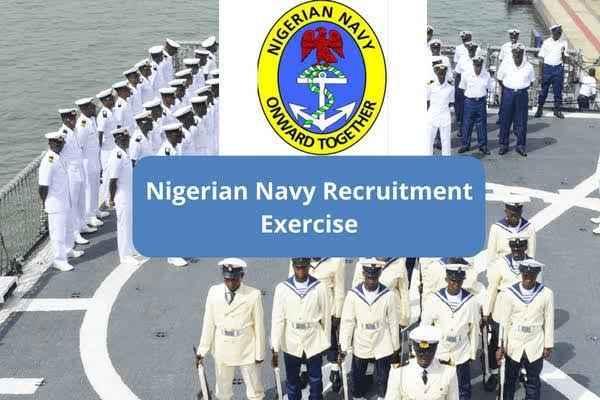The Different Positions In The Nigerian Navy

The Nigerian Navy is a vital branch of the Nigerian Armed Forces, responsible for defending the nation's maritime interests, enforcing maritime law, and ensuring safe passage through Nigeria’s waters. The Navy is structured with a hierarchical rank system, with each position playing a crucial role in maintaining the operational effectiveness and readiness of the naval force. Here’s a detailed look at the different positions in the Nigerian Navy and their respective roles.
1. Admiral of the Fleet
Role and Responsibilities
The Admiral of the Fleet is the highest possible rank in the Nigerian Navy, though it is largely ceremonial. This rank is rarely conferred and signifies an officer with vast experience and outstanding service. The role includes providing strategic direction and representing the Navy at the highest levels of government and international forums.
2. Admiral
Role and Responsibilities
An Admiral commands the entire Navy or large naval fleets. They are responsible for high-level strategic planning, decision-making, and ensuring the operational readiness of the naval force. Admirals also represent the Navy in defense policy discussions and international naval operations.
3. Vice Admiral
Role and Responsibilities
A Vice Admiral typically serves as the Deputy Chief of Naval Staff or commands large fleets. Their duties involve overseeing major naval operations, strategic planning, and administrative responsibilities. They ensure that naval forces are prepared for both peacetime and wartime operations.
4. Rear Admiral
Role and Responsibilities
Rear Admirals command naval task forces or serve as senior staff officers. They are involved in operational planning, execution of large-scale naval missions, and coordination of resources across multiple naval units. Rear Admirals also play a significant role in training and developing junior officers.
5. Commodore
Role and Responsibilities
A Commodore commands flotillas or serves as a senior staff officer. Their responsibilities include tactical planning, leadership of naval operations, and administrative oversight. Commodores ensure that the ships under their command are maintained and operationally ready.
6. Captain
Role and Responsibilities
Captains command individual ships or serve as senior staff officers. They are responsible for the overall operation of their vessel, including navigation, crew management, and mission execution. Captains ensure that their ships are combat-ready and that their crews are well-trained.
7. Commander
Role and Responsibilities
Commanders often serve as the commanding officer of smaller ships or executive officers on larger vessels. Their duties include leading naval missions, overseeing training and readiness, and ensuring the welfare of their crew. Commanders are key to the successful operation of their ships.
8. Lieutenant Commander
Role and Responsibilities
Lieutenant Commanders serve as department heads on ships or shore installations. They are responsible for specific areas such as engineering, operations, or logistics. Their role involves supervising junior officers and ensuring that their department functions smoothly and efficiently.
9. Lieutenant
Role and Responsibilities
Lieutenants are junior officers who command small vessels or serve as department heads on larger ships. They are responsible for leading sailors, managing daily operations, and ensuring that orders from higher command are executed effectively. Lieutenants are often the first step in a naval officer's command career.
10. Sub-Lieutenant
Role and Responsibilities
Sub-Lieutenants are entry-level officers who assist Lieutenants and Lieutenant Commanders. They are involved in various shipboard duties, including navigation, communication, and general administration. This rank serves as a training ground for future leadership roles.
11. Midshipman
Role and Responsibilities
Midshipmen are naval cadets who are undergoing training to become commissioned officers. They participate in academic and practical training, learning the fundamentals of naval operations, leadership, and maritime law. Midshipmen are prepared for future roles as junior officers.
12. Warrant Officer
Role and Responsibilities
Warrant Officers are highly skilled non-commissioned officers who provide technical expertise and leadership. They play a crucial role in training sailors, maintaining equipment, and ensuring that technical operations are conducted effectively.
13. Chief Petty Officer
Role and Responsibilities
Chief Petty Officers are senior non-commissioned officers who lead divisions of sailors. They are responsible for the discipline, training, and welfare of their sailors, ensuring that their teams are ready for operational duties.
14. Petty Officer
Role and Responsibilities
Petty Officers are experienced sailors who lead small teams and oversee specific tasks on ships or shore installations. Their duties include maintaining equipment, training junior sailors, and ensuring that daily operations are conducted smoothly.
15. Leading Seaman
Role and Responsibilities
Leading Seamen are junior non-commissioned officers who assist Petty Officers and Chief Petty Officers. They lead small teams, conduct training exercises, and ensure that orders are executed efficiently.
16. Able Seaman
Role and Responsibilities
Able Seamen are experienced sailors who perform a variety of tasks on board ships, including navigation, maintenance, and general operations. They follow orders from their superiors and contribute to the overall mission of the Navy.
17. Ordinary Seaman
Role and Responsibilities
Ordinary Seamen are entry-level sailors who perform basic duties and learn the skills necessary for a naval career. They participate in training exercises and assist in the daily operations of the ship.
Conclusion
The Nigerian Navy's rank structure ensures that each role, from the highest-ranking Admiral to the newest Ordinary Seaman, is essential for the effective functioning of the force. Each position carries specific responsibilities that contribute to the Navy's mission of protecting Nigeria's maritime interests, ensuring safe navigation, and supporting international peacekeeping efforts. Understanding these roles highlights the importance of every individual in the Nigerian Navy and their collective contribution to national and global security.






